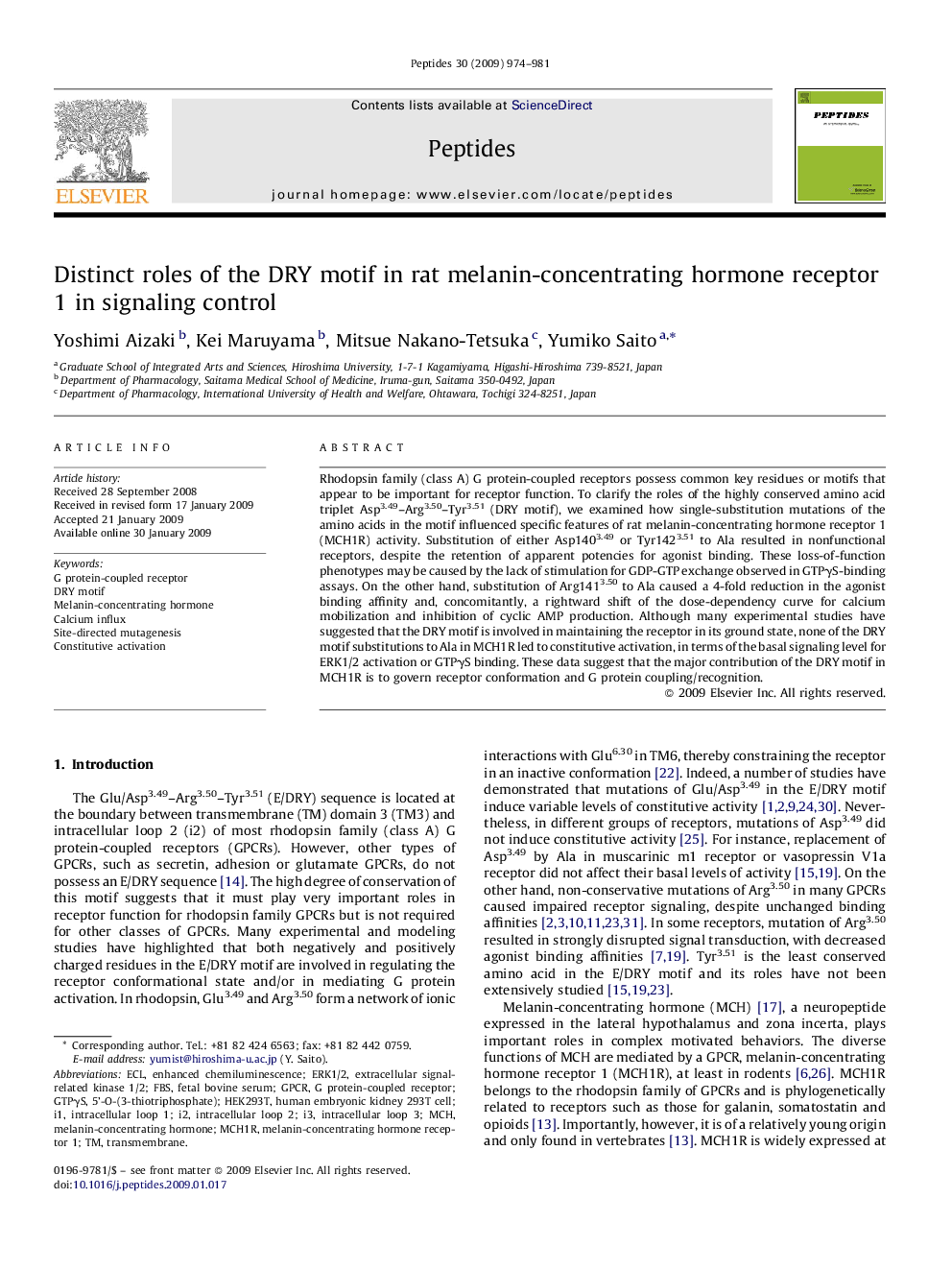| Article ID | Journal | Published Year | Pages | File Type |
|---|---|---|---|---|
| 2007339 | Peptides | 2009 | 8 Pages |
Rhodopsin family (class A) G protein-coupled receptors possess common key residues or motifs that appear to be important for receptor function. To clarify the roles of the highly conserved amino acid triplet Asp3.49–Arg3.50–Tyr3.51 (DRY motif), we examined how single-substitution mutations of the amino acids in the motif influenced specific features of rat melanin-concentrating hormone receptor 1 (MCH1R) activity. Substitution of either Asp1403.49 or Tyr1423.51 to Ala resulted in nonfunctional receptors, despite the retention of apparent potencies for agonist binding. These loss-of-function phenotypes may be caused by the lack of stimulation for GDP-GTP exchange observed in GTPγS-binding assays. On the other hand, substitution of Arg1413.50 to Ala caused a 4-fold reduction in the agonist binding affinity and, concomitantly, a rightward shift of the dose-dependency curve for calcium mobilization and inhibition of cyclic AMP production. Although many experimental studies have suggested that the DRY motif is involved in maintaining the receptor in its ground state, none of the DRY motif substitutions to Ala in MCH1R led to constitutive activation, in terms of the basal signaling level for ERK1/2 activation or GTPγS binding. These data suggest that the major contribution of the DRY motif in MCH1R is to govern receptor conformation and G protein coupling/recognition.
